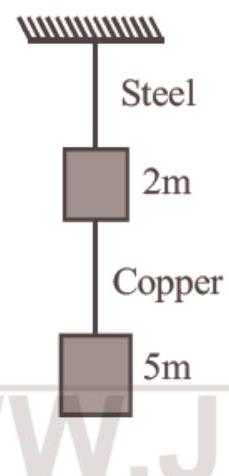Mechanical Properties of Solids - Result Question 6
7. If the ratio of diameters, lengths and Young’s modulus of steel and copper wires shown in the figure are
[NEET Kar: 2013]
(a)
(b)
(c)
(d)

Show Answer
Answer:
Correct Answer: 7. (c)
Solution:
- (c) From formula,
Increase in length
If a wire of length
Young Modulus,
Here,






